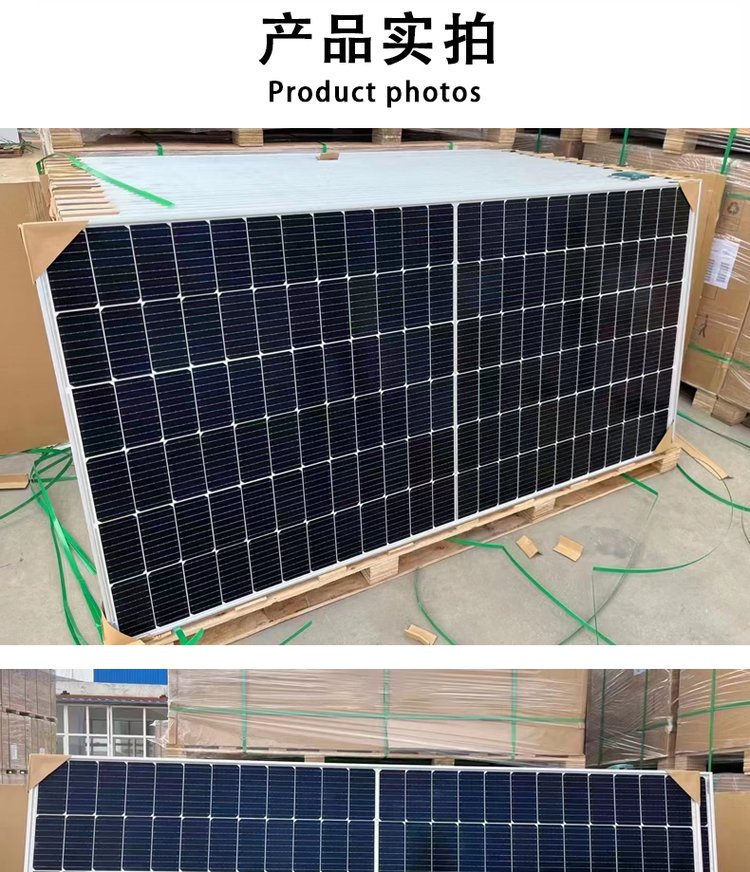Welcome to LAIXL, producing EL testers, IV testers, and drone EL
xinwen
瀏覽數:71 發布于:2025-06-18
As an important direction for upgrading photovoltaic technology, high-power photovoltaic modules have broad market prospects in the future, but they also face multiple challenges such as technology, cost, and market competition. The following is an analysis of the key trends and influencing factors for its future market development:
1. Core driving factors
Cost reduction and efficiency improvement demand: High power components (such as 600W+) can dilute BOS (system balance cost) by increasing the power of a single component, reducing installation and operation costs per watt, especially suitable for large ground power stations.
Technological iteration acceleration: The popularization of N-type battery technologies such as TOPCon, HJT, IBC, and processes such as stacking half cells, multiple main gates, and stacked tiles have driven component power to exceed 700W+.
Promotion of dual carbon targets: Against the backdrop of global energy transition, the demand for photovoltaic installed capacity continues to grow, and high-power components can improve land/roof utilization, leading to a trend of intensive development.
2. Market Outlook Forecast
Scale growth: According to industry analysis, the market share of high-power components (≥ 600W) is expected to exceed 50% by 2025, becoming mainstream; By 2027, the global installed capacity of photovoltaics is expected to reach 500GW, with a further increase in the proportion of high power.
Application scenario expansion:
Centralized power station: High power+tracking bracket+high voltage system (1500V) becomes standard configuration.
Distributed industrial and commercial: High power components are adapted to limited roof areas to improve investment return.
Offshore photovoltaics: There is an urgent demand for high-power, PID resistant, and corrosion-resistant components in emerging scenarios.
3. Key technology trends
Large scale silicon wafers: evolving from 182mm and 210mm to 230mm and above, but addressing issues such as fragmentation rate and hot spot risk.
Perovskite stacking technology: Laboratory efficiency has exceeded 33%, and in the future, commercialization of 800W+components may be achieved with crystalline silicon stacking.
Intelligent integration: Integrating optimizers or micro inverters to improve system power generation and operational efficiency.
4. Main challenges
Industrial chain collaboration: Supporting materials such as silicon wafers, glass, and brackets need to be upgraded synchronously, such as larger glass production capacity and stronger bracket load-bearing design.
Thermal management challenge: The increase in operating temperature of high-power components may affect the actual power generation efficiency, and the heat dissipation design needs to be optimized.
Standards and compatibility: Different countries have inconsistent standards for component size, voltage, etc., which increases the difficulty of global layout for manufacturers.
5. Regional market differences
European and American markets: preference for efficient and high reliability products, high acceptance of premium prices; The IRA policy in the United States stimulates domestic production capacity.
Asia Pacific markets: Price sensitive markets such as China and India are more concerned about LCOE (Levelized Cost of Electricity), promoting rapid penetration of high-power.
Emerging markets: Regions with superior lighting resources such as the Middle East and Latin America have significant economic advantages in high-power components.
6. Competitive landscape
Leading enterprises: Longi, Jinko, Tianhe, JA Solar, and others continue to launch high-power new products, increasing their technological barriers.
New forces entering the market: Cross border players (such as Tongwei and Huawei) enter the market through vertical integration or digital technology.
Technological route differentiation: The competition between N-type vs PERC and rectangular silicon wafers (2384 * 1134mm) vs square silicon wafers will affect the pattern.
7. Potential risks
Technological substitution: such as breakthroughs in thin-film batteries or concentrated photovoltaics, may overturn existing technological paths.
Trade barriers: Europe and America impose restrictions on China's photovoltaic supply chain (such as UFLPA) or affect exports.
Overcapacity: The industry is aggressively expanding production, and we need to be wary of price wars squeezing profits.
Conclusion
High power photovoltaic modules will become the mainstream choice in the photovoltaic market in the next 5-10 years, but companies need to continue investing in technological innovation, cost control, and application scenario exploration. Meanwhile, the policy environment, supply chain resilience, and technological route selection will determine the ultimate market landscape. For investors and manufacturers, laying out high value-added technologies (such as stacked batteries) and differentiated markets (such as offshore photovoltaics) may become key breakthroughs.
 +86 177-0622-2370
+86 177-0622-2370
Address: 4409 Wuzhong Avenue, Suzhou City, Jiangsu Province
Phone: +86 17706222370
Email: el@lailx.com

LINE